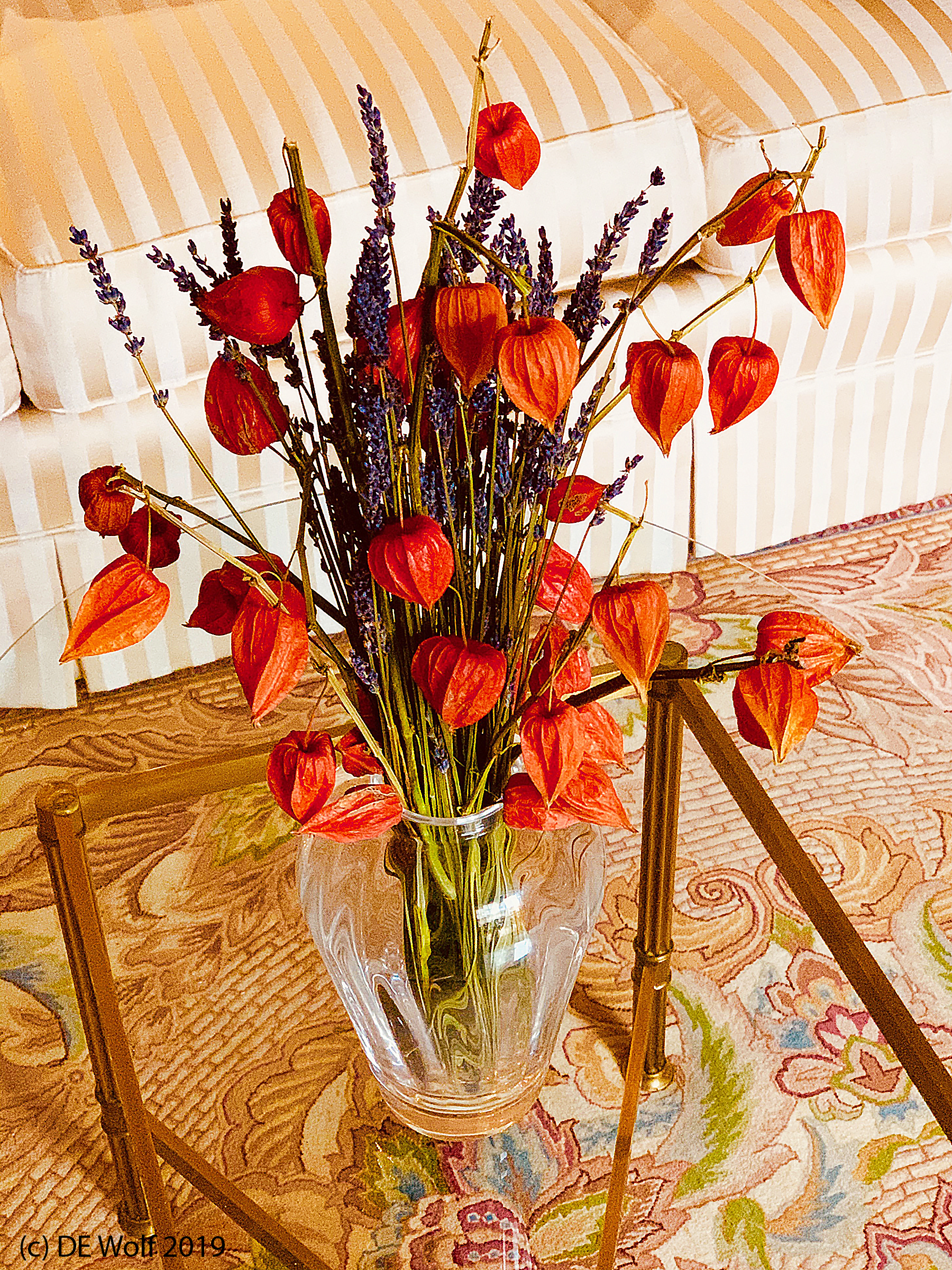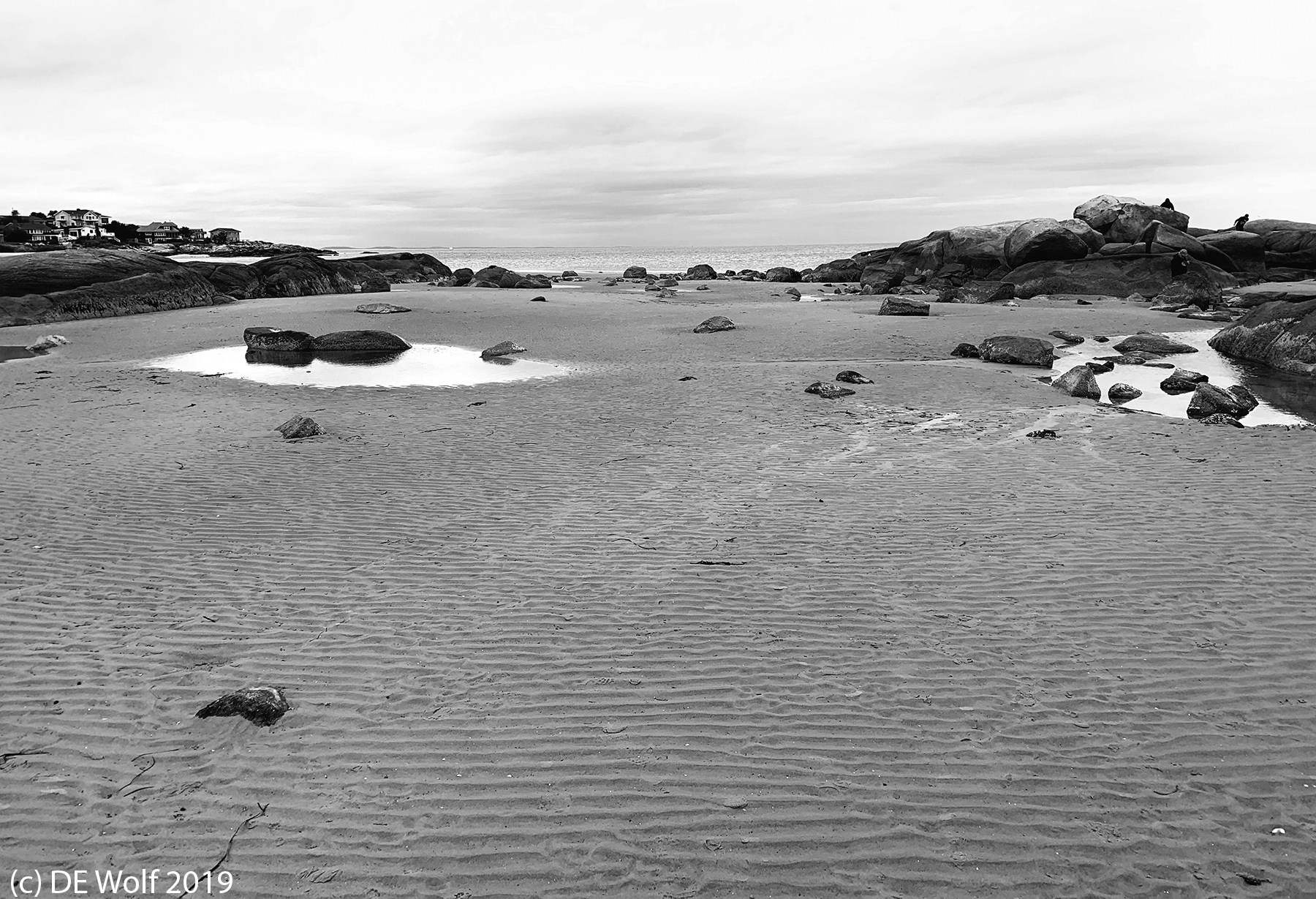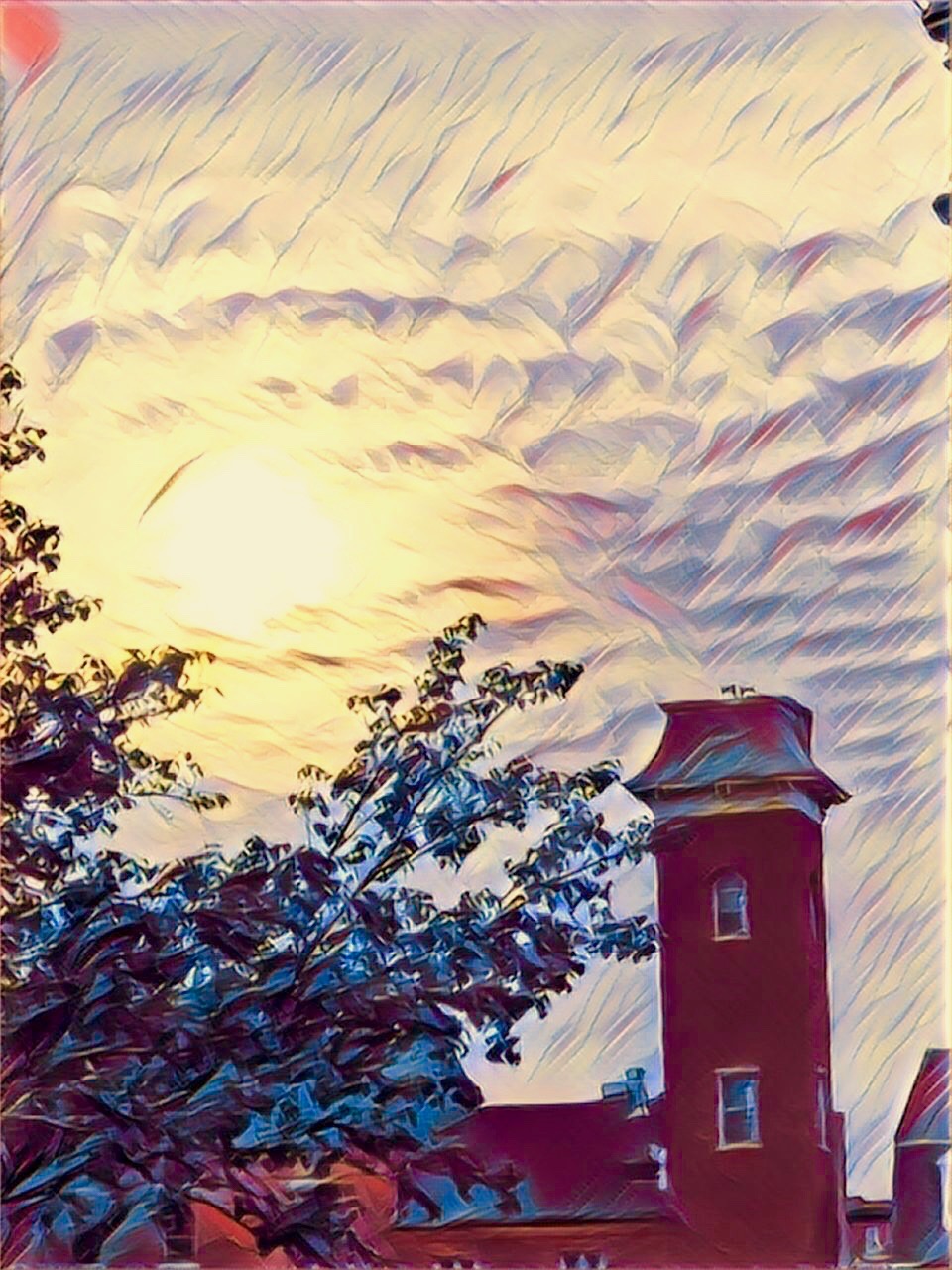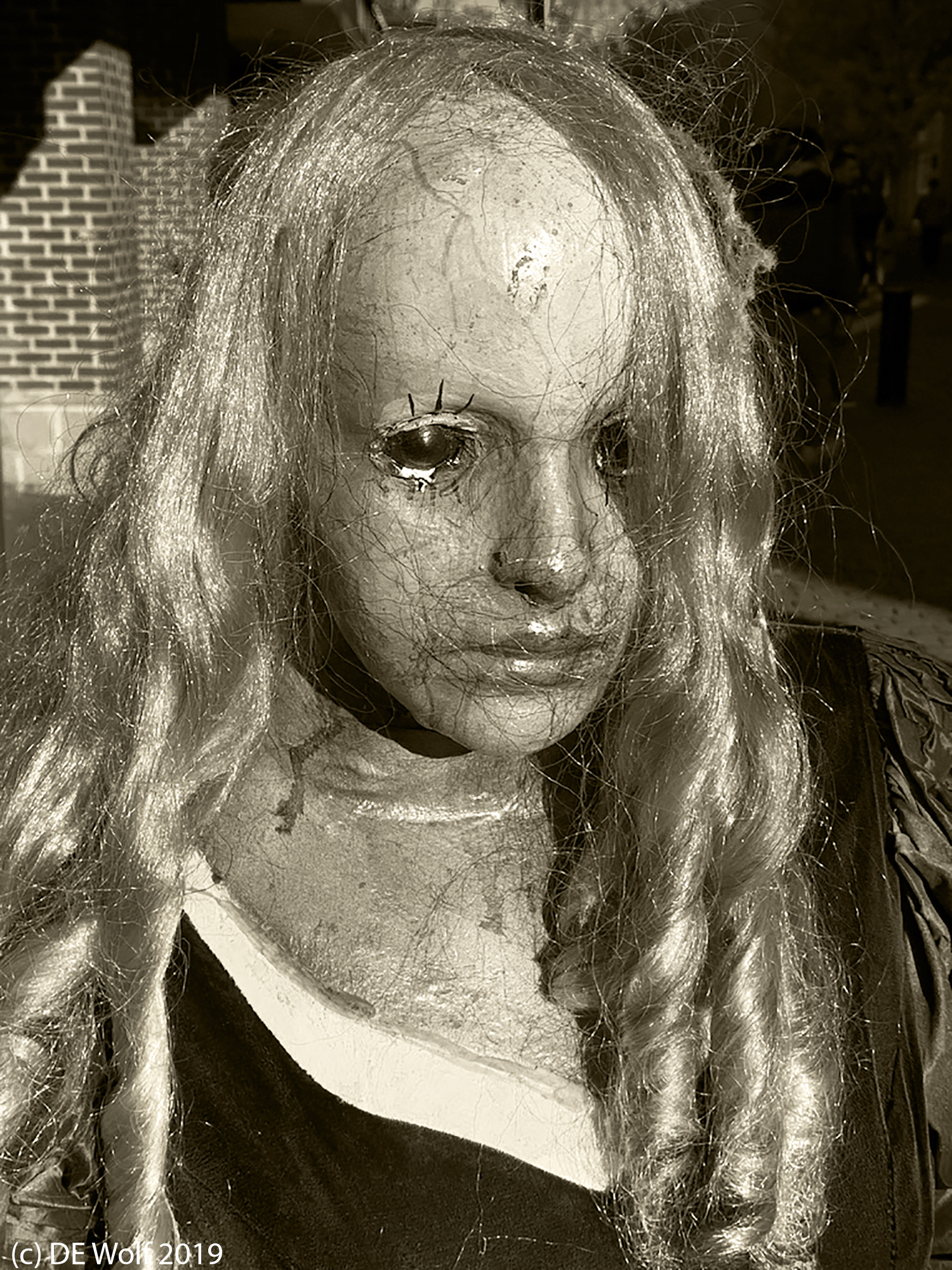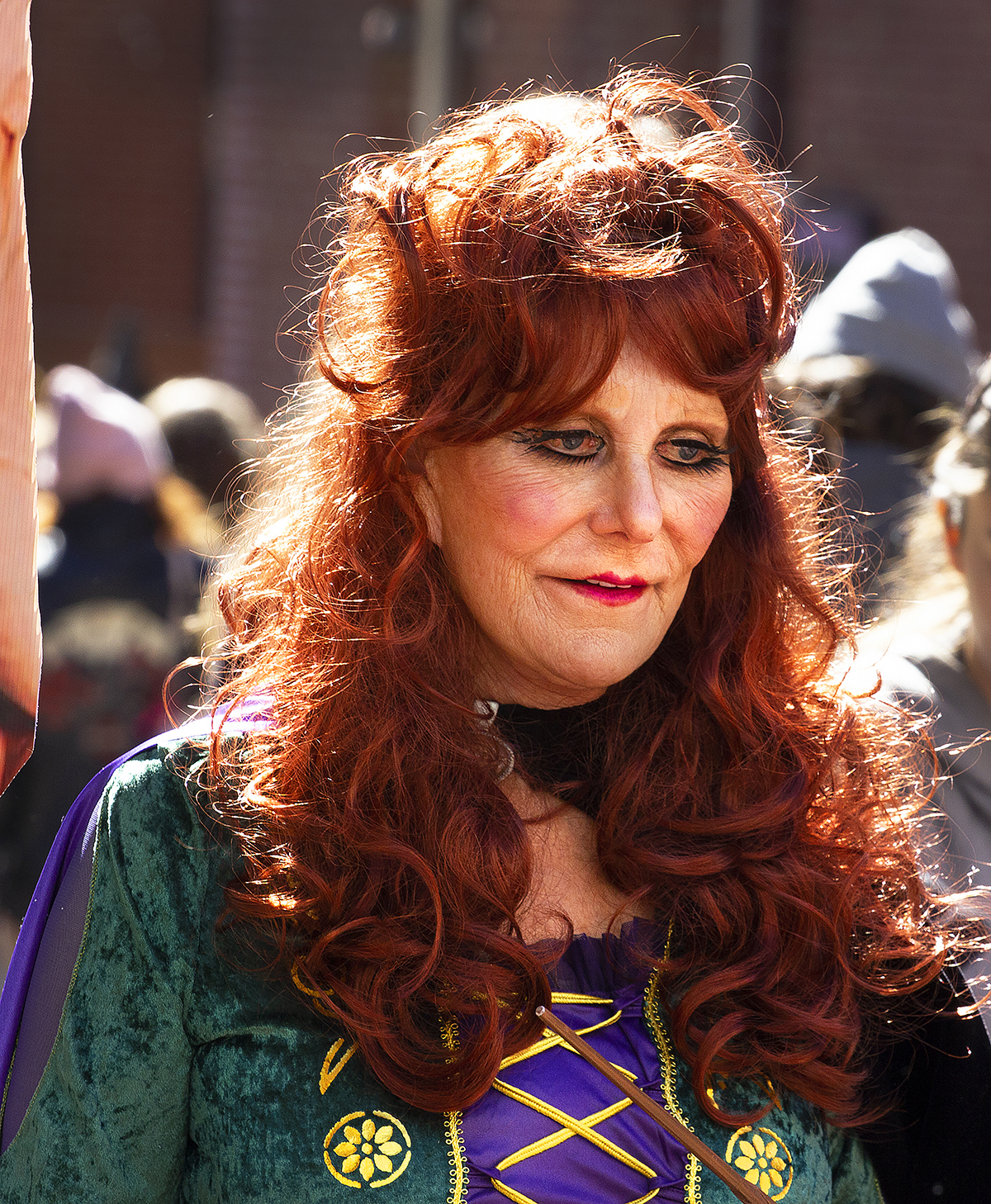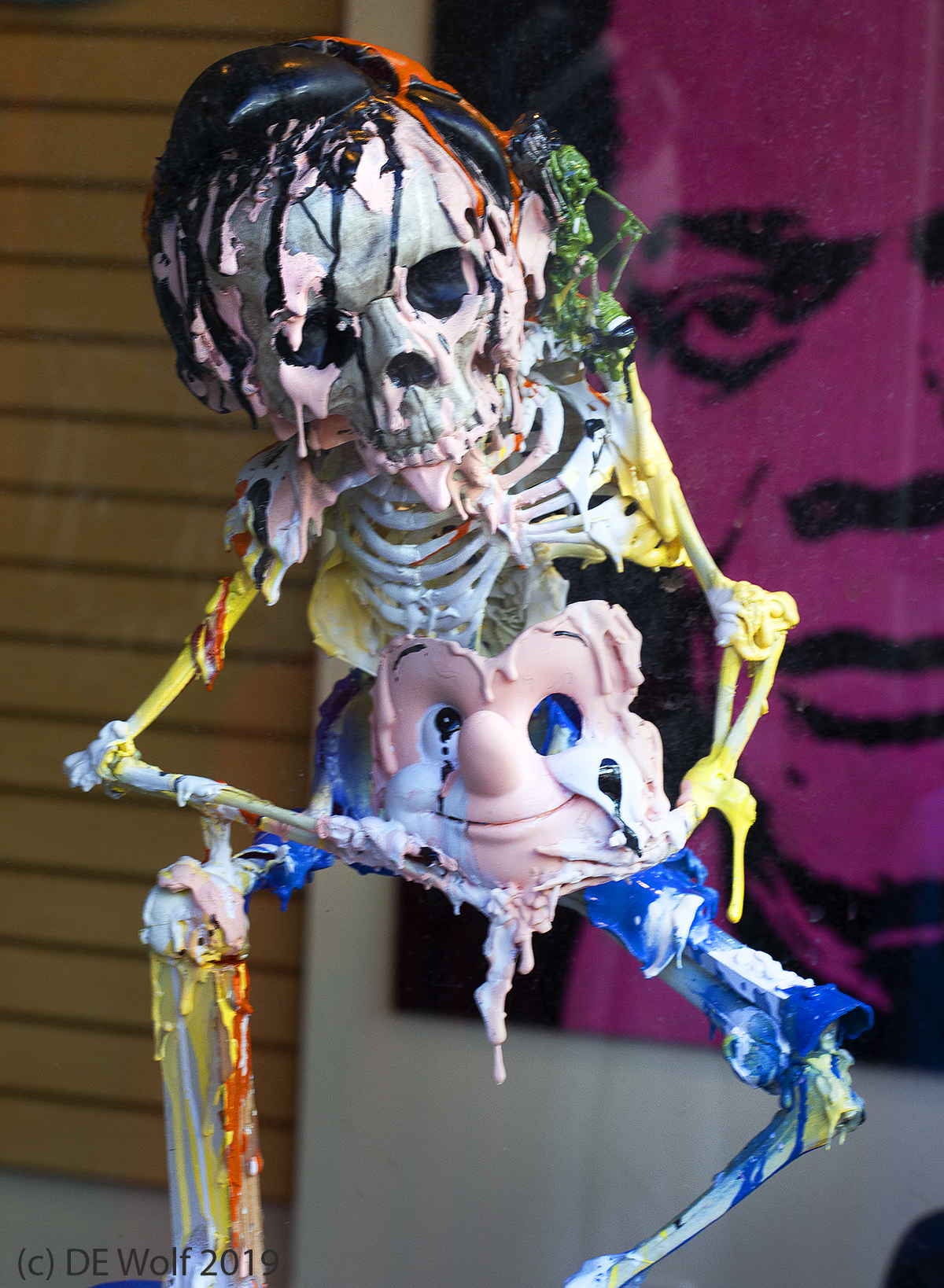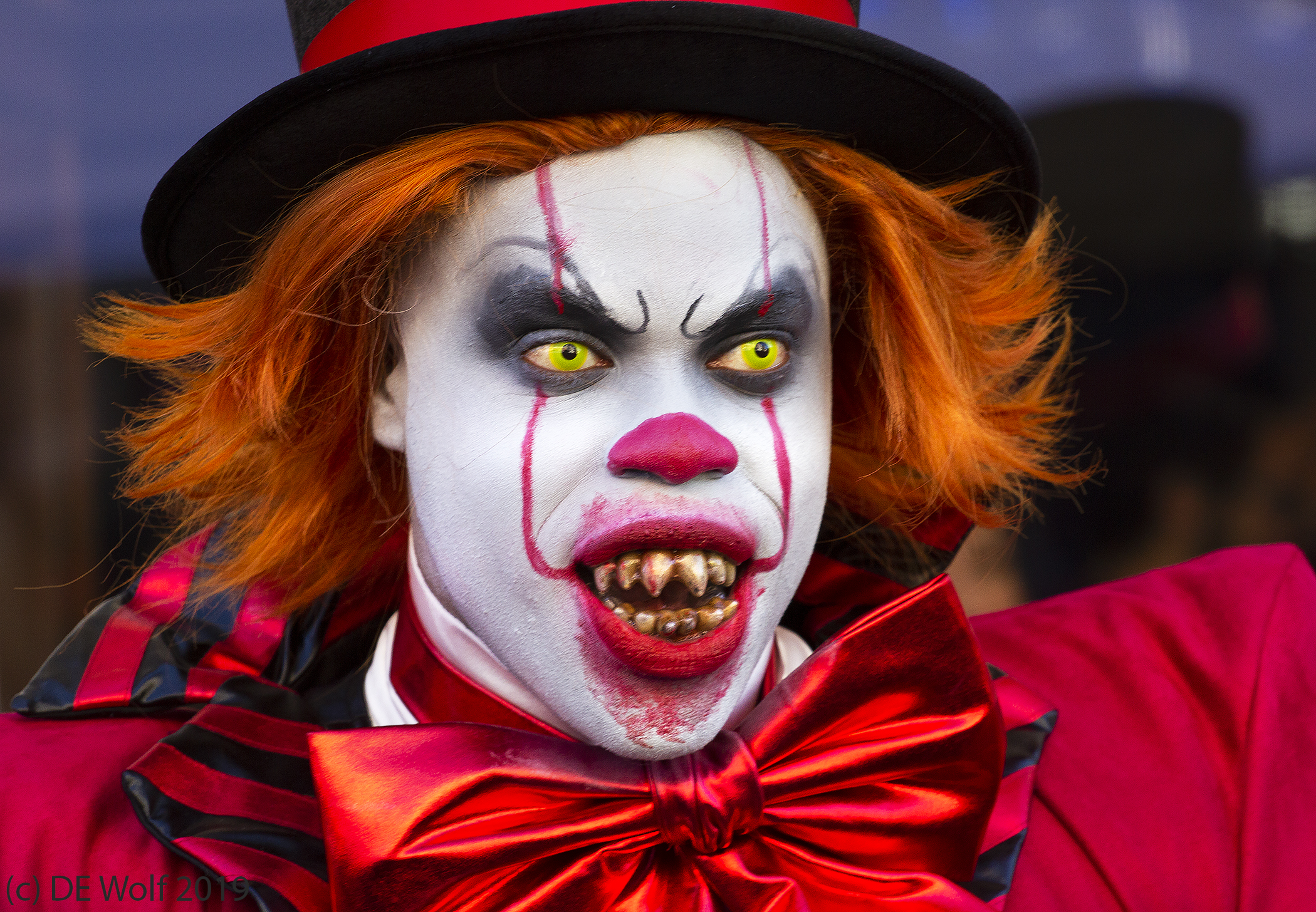Today’s image is going to be just a simple still life. These are Japanese lantern flowers, Physalis alkekengi, arranged with lavender. So it both looks and smell good. It his the perfect color combination of Halloween coming to a crescendo! The image was, of course, taken with my iPhone. I experimented with stylizing it in PRISMA, but in the end decided to leave it as a simple photograph.
Category Archives: Personal Photographic Wanderings
Wingaersheek Panorama
When I was up at Wingaersheek Beach in Gloucester, MA a few weeks back, I took one of those iPhone panoramas to text to people. Tonight I thought that I would take a look at processing it. It is shown in Figure 1. I don’t think that it is the greatest of photographs, but I was struck by several points, perhaps worth sharing as a lesson of this kind of very wide angle photograph.
The image, to me at least, has a nineteenth century feel. The day was very gloomy, as is the photograph. There was an incessant and dramatic wind. The photograph speaks to absolute solitude, stability, and silence. The wide angle is probably close to 90 deg.- extreme! The foreground, the expanse of sand, is exaggerated, and I love it! The horizon seems so very distant as is the little spit of open water. Over all, I feel like the image was taken on Mars, or at least some alien place, as if it was taken from a Rover Explorer in a crater surveying the surrounding edges. And judging from the houses on the left and the people climbing the rocks on the right(both innocuous objects in the image), we have discovered life on Mars, well maybe not Mars, at least Gloucester then!
Late afternoon and cloudy
The sky here on the North Shore of Massachusetts often takes on dramatic aspects. As a break from Halloween, I’d like to share the image of Figure 1, which shows what I believe are cirrocumulus clouds forming what are referred to as a Mackeral sky. “Mackerel sky and mares’ tails make tall ships carry low sails.” So goes an old mariners’ rhyme, referring to skies of rippled cirrocumulus clouds that resemble the striped scale pattern of a mackerel. While the pattern was striking in and of itself, I thought that it would benefit from stylization using the PRISMA program.
So spooky!
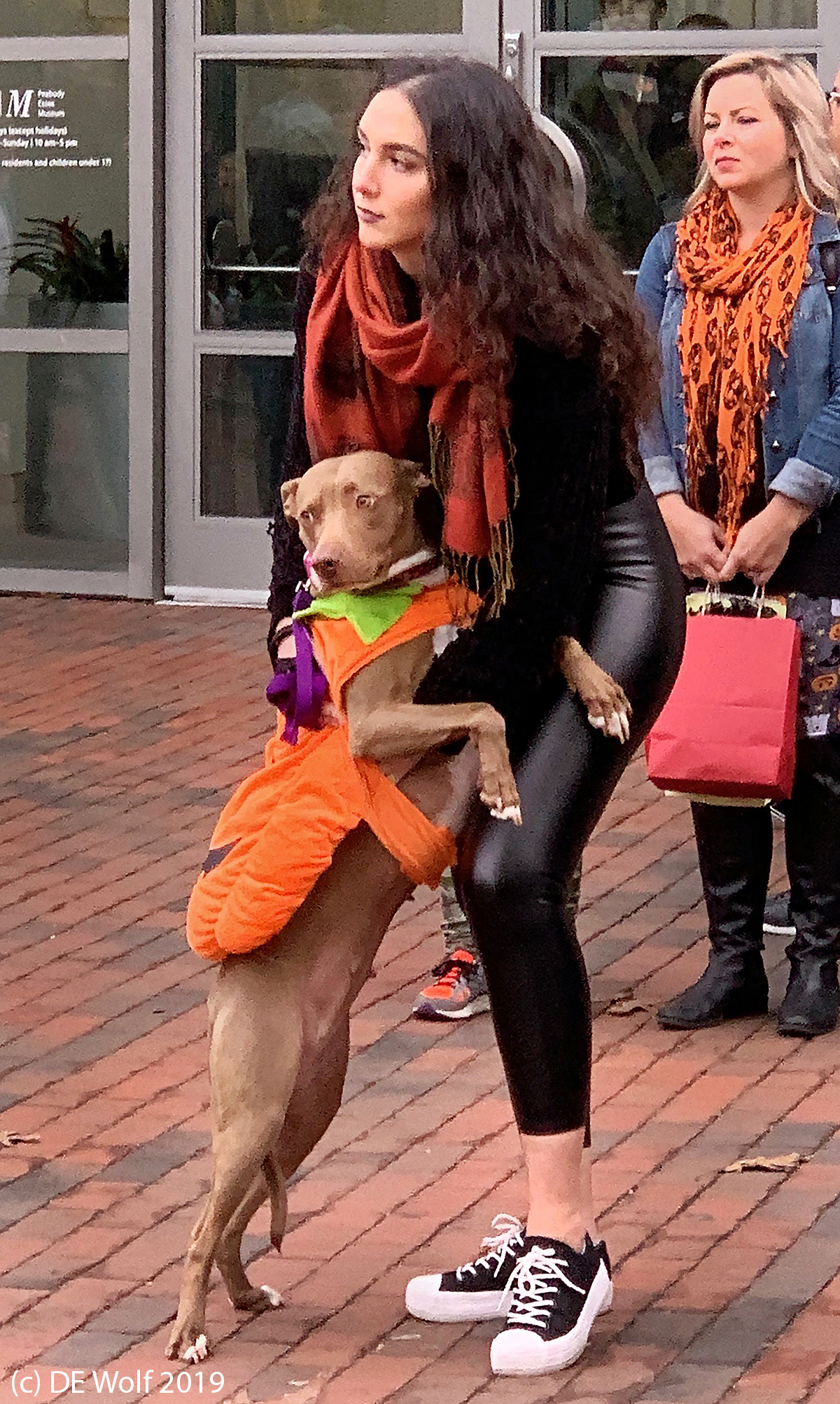
Figure 1 -It’s so spooky that even the pit bulls are scared! Salem, MA, October 25, 2019, Salem, MA.(c) DE Wolf 2019.
I just want to say that it is the weekend before Halloween and the festivities in Salem are really getting excited. It is so spooky that even the pit bulls are scared! I am worshipping at the alter of Henri Cartier Bresson and “The Decisive Moment!”
Abigail’s Ghost
Abigail’s Ghost
Mother’s funeral was finally over,
All the dishes washed, and food put away
Black-clad, mourning guests had all departed.
His sister had stayed to help him clean up.
He had kissed her goodbye in the driveway.
Odd to sleep again in his mother’s house.
She died in her great poster bed upstairs.
James sat watching the embers slowly die out
A reflection in the window, he turned
No one there. So it had begun again.
Mom was not the first to die in this house.
Abigail? He asked. Fire crackled back.
She died three hundred years before, died here
In this very house. It was smaller then.
Sixteen, really too young to be a bride.
Golden hair, blue eyes reflecting silence.
Obedient child. A jealous husband.
Twenty years her senior. Horrible things!
They say he beat her, although never proved.
Made her watch unchristian horrible things!
James saw her first when he was merely ten.
Wandering the house, sobbing in the dark.
Twenty December seventeen nineteen.
It was the shortest day. She took her life.
Slit her wrists with a kitchen knife. They say
A suicide! Banned her from the church yard.
No one knew where her remains were buried.
James knew. They were in the old root cellar.
At sixteen she had seen horrible things.
Unchristian things. Her husband only laughed,
Mocked her innocence, hitting her harder.
They might have understood had she killed him.
But she took her own life. James turned again
Towards the weeping spirit. Vacant blue eyes.
A corruption with her soul on fire.
Blood seeping to the floor. Horrible things!
Abigail? He asked. She had disappeared.
Returned to eternal desperation.
Behind Front Street in a late afternoon light

Figure 1 – PRISMA stylized photograph, “Behind Front Street in a late Afternoon Light.” Salem, MA, October 23, 2019. (c) DE Wolf 2019.
I thought that I would take a break today from ghoulish Halloween image and share the PRISMA stylized iPhone image of Figure 1. It shows the alley behind Salem’s Front Street in a gorgeous and golden afternoon light. I begin to be wary of the impending time change when we shall be cast into darkness, but in the meanwhile we may enjoy the light.
Good witches
There is a hidden dichotomy to Halloween in Salem. On the one hand you have the fun of childhood, the trick or treat of spooks, goblins, and witches. On the other hand you have, at least in the choice of location, the celebration of a truly terrible and unjust persecution of the late seventeenth century. People were falsely accused and murdered. This is not to be lauded and is, in fact, a terrible stain in our march for social justice.
At the risk of getting too serious here, it is believed that large parts of the christian mysogynist world view stems from St. Augustine, who more than any other early early christian thinker forged both Roman Catholicism and Protestantism’s view of woman. Dramatically, in our age of developing feminism, where thinkers like Richard Tarnas see feminism as a positive rising force in Western Philosophy – the Passion of the Western Mind – we are beginning to spontaneously think much more positively of witches.
In Figure1 we see one of the Good and True Witches of Salem, MA. In a real sense the term “Good Witch” is a hold over of St. Augustine’s prejudices. One and a half millennia later are we just beginning to understand that goodness is a fundamentally human quality despite all contrary indications?
“The first time I called myself a ‘Witch’ was the most magical moment of my life.”
― Drawing Down the Moon: Witches, Druids, Goddess-Worshippers, and Other Pagans in America
Putting on a face
We hear that people can put on multiple faces. “He is two-faced!” The theme of today’s photograph, Figure 1, is just that. cast in a macabre Salem Halloween light, I ask the simple question whether you can change your face. Perhaps this question has new or re-emphasized meaning in our current political environment, where truth and reality are continuously being challenged. Here a skeleton, whose flesh is still liquifying, takes off its grinning face to reveal an even more terrifying demeanor. All the while a watchful face in the background stares at him. This was taken through the window of a gallery on Essex Street. And just to confuse and mix message everything, we have the flowery pastel colors.These are happy colors. The subject matter tells a different story.
Canon T2i with EF70-200mm f/4 USM lens at 100 mm, ISO 400, Aperture Priority AE Mode 1/60th sec at f/8.0, pattern metering with no exposure compensation.
Pennywise
As we get closer and closer to Halloween, the creatures that you run into on the streets of Salem, MA getting scarier and scarier. So not surprising, I today took the image of Figure1, which I am pretty sure is going to be my creepiest photograph of Halloween 2019. It is Pennywise the Clown.
Nothing is more terrifying than a clown! And for those, who have read the Stephen King novel or seen one of its movie dramatization, the chills run up your spine and you are left wondering whether this is someone dressed as Pennywise to collect tourist tips for the privilege of taking a photo with the clown or … While it is just possible that this is the true child murderer of the centuries. You really cannot be sure, as it is said that he has been found in sketches of ancient carnivals, often seen with a red balloon.
Stephen King is such a master of the macabre that you are left wondering whether IT, or Pennywise, is some mythic character, long whispered about on chilly October nights. Pennywise, according to King, is based upon serial killer John Wayne Gacy who performed at children’s parties as Pogo the Clown. He was responsible for a string of murders of 30 young men and boys in the Chicago area in the 1970s,
Perhaps, I should leave it at that. Leave it for you to stare at the blood red colors of Pennywise’s costume – the blood on his face and the carnivorous teeth. He is something unworldly, something evil, of evil. And whether he is real or merely a creation of the depths of a primordial terror in our minds, may not truly make a difference.
Canon T2i with EF70-200 mm f/4 USM lens at 159 mm, ISO 400, Aperture Priority AE mode 1/125th sec at f/6.3, pattern focusing with no exposure compensation.

